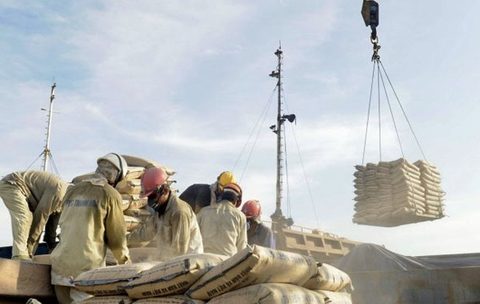Cement export tax burdens domestic firms
 |
| The imposition of cement export tax is said to undermine the industry’s competitiveness. - Photo baoxaydung.com.vn |
Under the Decree No 122/2016/ND-CP, which took effect from September 1, 2016, if spending on natural resources and energy for production accounts for 51 per cent of a product’s price or higher, the product will be subject to an export tax of 5 per cent. The decree was raised with an aim to limit the export of natural resources and minerals. Cement is currently subject to the tax.
The National Assembly Finance and Budget Committee has asked the Ministry of Finance to review this regulation, adding that it was difficult to verify the volume of natural resources producers are using and the costs of energy they are incurring, making the regulation infeasible and burdening export firms.
The Committee said the appropriateness of this regulation in reality must be evaluated to propose amendments and remove difficulties for firms.
According to Nguyen Quang Cung, president of Viet Nam Cement Association, there is currently no basis to verify the content of natural resources and energy costs. He said that they still rely on the declaration of producers, which is a loophole that firms could exploit to avoid tax.
In addition, such tax imposition on cement would discourage the application of new technologies in production to reduce prices. Modern technologies would help create economies of scale, thereby reducing total production cost, while spending on natural resource materials is unchanged. Therefore, the percentage of natural resource cost could exceed 51 per cent and it is possibly that they would pay much more tax, Cung said.
If tax imposition on cement aims to prevent the export of natural resources, other tax calculation methods such as partially progressive tariff like what is applied for the personal income tax should be applied rather than a fixed tax rate, he added.
He said that the export tax was undermining the competitiveness of the cement industry, which was struggling with a stockpile in the domestic market.
The association said that the current production capacity of domestic cement plants totalled 88 million tonnes per year and expansions and new plants were forecast to boost production capacity to between 120 million and 130 million tonnes by 2020. Meanwhile, domestic consumption demand was anticipated to reach only 82 million by 2020.
What the stars mean:
★ Poor ★ ★ Promising ★★★ Good ★★★★ Very good ★★★★★ Exceptional
Latest News
More News
- First members of Danang International Finance Centre revealed (December 22, 2025 | 17:39)
- Human-centred governance seen as key to AI development (December 19, 2025 | 18:19)
- Top 10 notable events of Vietnam’s industry and trade sector in 2025 (December 19, 2025 | 14:00)
- Tungsten surges to 12-year high as world enters a new 'black gold' race (December 18, 2025 | 17:27)
- Vietnam’s coffee exports set new record despite price pressures (December 18, 2025 | 17:13)
- Garment and textile sector seeks new growth after volatile year (December 18, 2025 | 17:01)
- VinSpeed and Siemens strengthen cooperation for high-speed rail development (December 18, 2025 | 16:53)
- High-tech adoption for TH true MILK (December 18, 2025 | 13:39)
- Takeda supports health resilience amid climate change challenges (December 18, 2025 | 12:39)
- Mondelez Kinh Do - a chapter of purpose-led leadership in Vietnam (December 18, 2025 | 09:44)


















 Mobile Version
Mobile Version